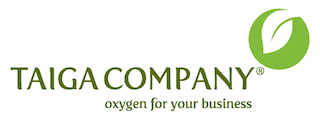Make Green the New Black with Sustainable Branding Ideas
Branding can be hard enough to achieve. Throw sustainability into the mix, and things will become much more complex. But sustainable branding isn’t impossible with a step in the right direction. There are systematic changes your business must make, such as reorganizing core company strategies. However, it isn’t too challenging with the right frameworks. From partnering with green suppliers to modernizing brand culture, here are some planet-saving suggestions.
Installing Commercial Accessories
Grassroots branding is about getting your name out there to be associated with a particular product or service. Everything you do needs to scream quality and opportunity. Traditional branding includes logo placement, which occurs across multiple media. This includes TV, radio and print. But there are also accessories such as signs and even awnings. Patio Shades offers sustainable commercial solutions at https://patioshadesretractableawnings.com/commercial/.
Finding Green Partners
Partners can make or break a business. When it comes to modernization via sustainable efforts, partners are much more exclusive and essential. Balancing your waste against production or offsetting carbon, for example, can rely on what your partners do just as much or more than your company. Partners with solid sustainability values are much more likely to reinforce the authenticity of your branding efforts in a sustainable way, and you can leverage the marketing.
Sustainable Branding through Ethical Sourcing
Much like finding reliable green partners, ethical sourcing can become a valued and essential part of your company’s branding. More than a gimmick or marketing tool, ethical sourcing has a direct impact on the planet, place, and people. A study from the University of Michigan concluded that US choosing-made products over imports can reduce carbon emissions by 21%. Yet there are also knock-on effects on local environments, economies, and even culture.
Cultivating Sustainable Brand Culture
Further to culture, your brand culture plays a core role in marketing and branding in a sustainable way. Without inherent positive qualities, your company will be set for failure on critical sustainability issues. This includes greenwashing when you should be focusing on real change that contributes to authentic sustainability. This ensures your business genuinely helps the planet and people, and customers are also able to see through thin promises and goals.
Measure and Manage Sustainability
So, how can you tell if your efforts are having a positive or negative impact? There are many tools you can use for data these days, including AI. Measuring performance allows you to optimize your actions. You can relay this through all public channels as part of a more sustainable brand effort. Some examples include conducting surveys, using recognized ESG frameworks such as SASB and GRI, and referring back to data for positive decisions.
Summary
The traditional routes of marketing are still part of sustainable branding. You can use eco-friendly print media and signage. Ethical sourcing of materials and products that sustain your business will help sustain other local partners, too, with a positive impact. Yet all your efforts are for nothing without action. Measuring and managing sustainability plans using data will help you grow. You can always refer back to this data to make positive decisions moving on.


